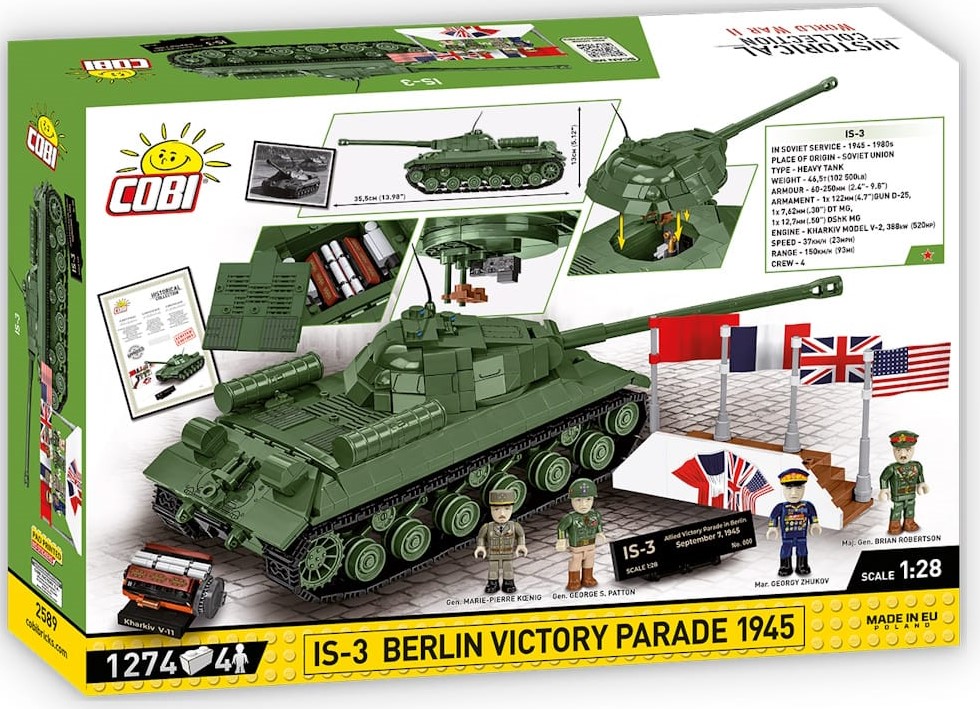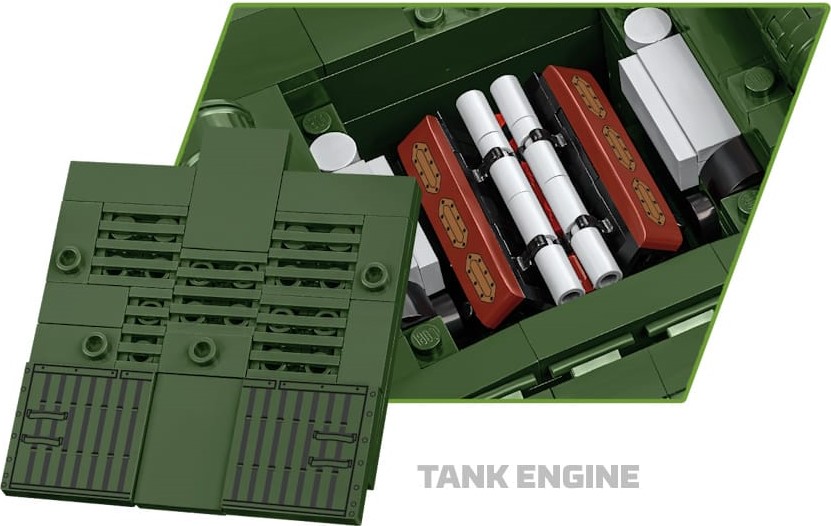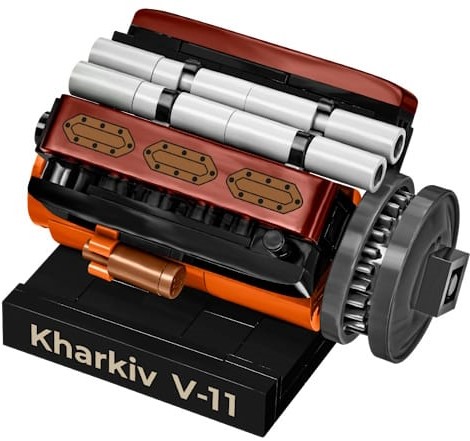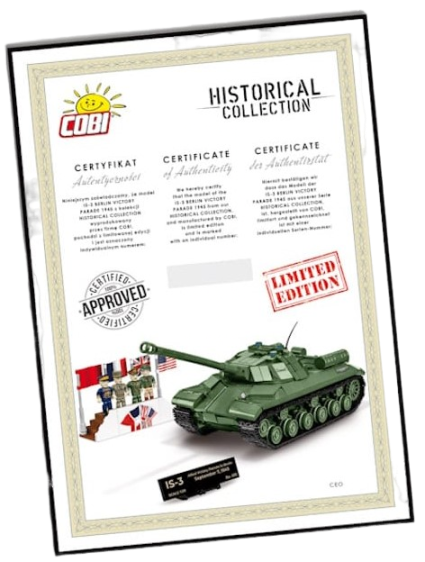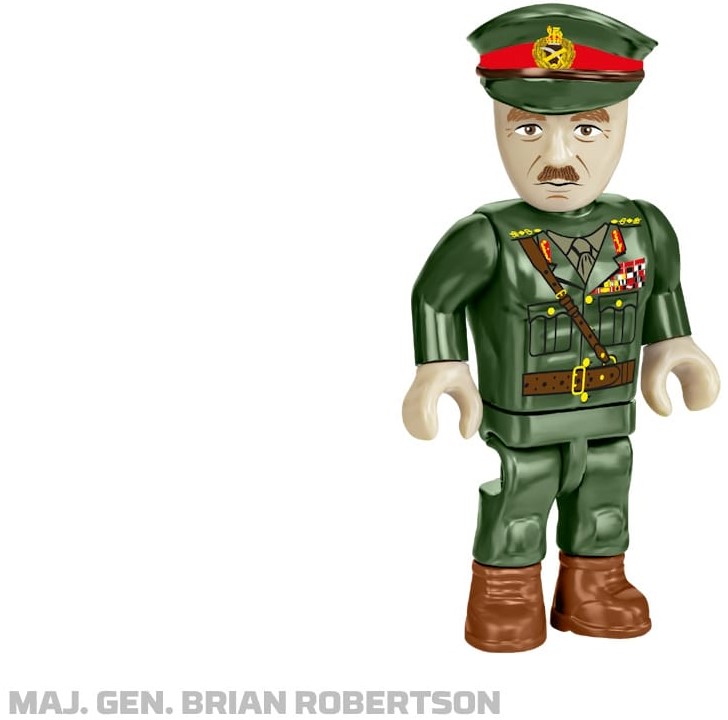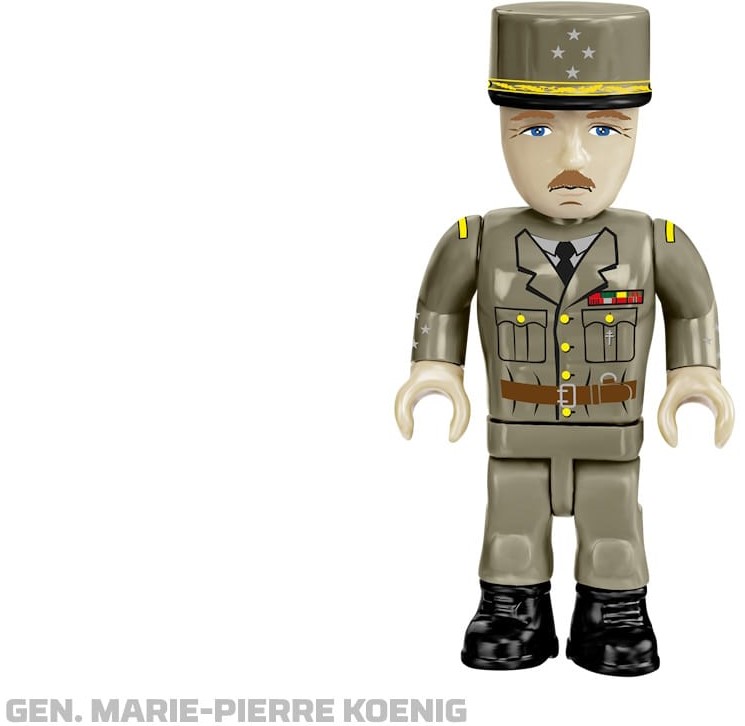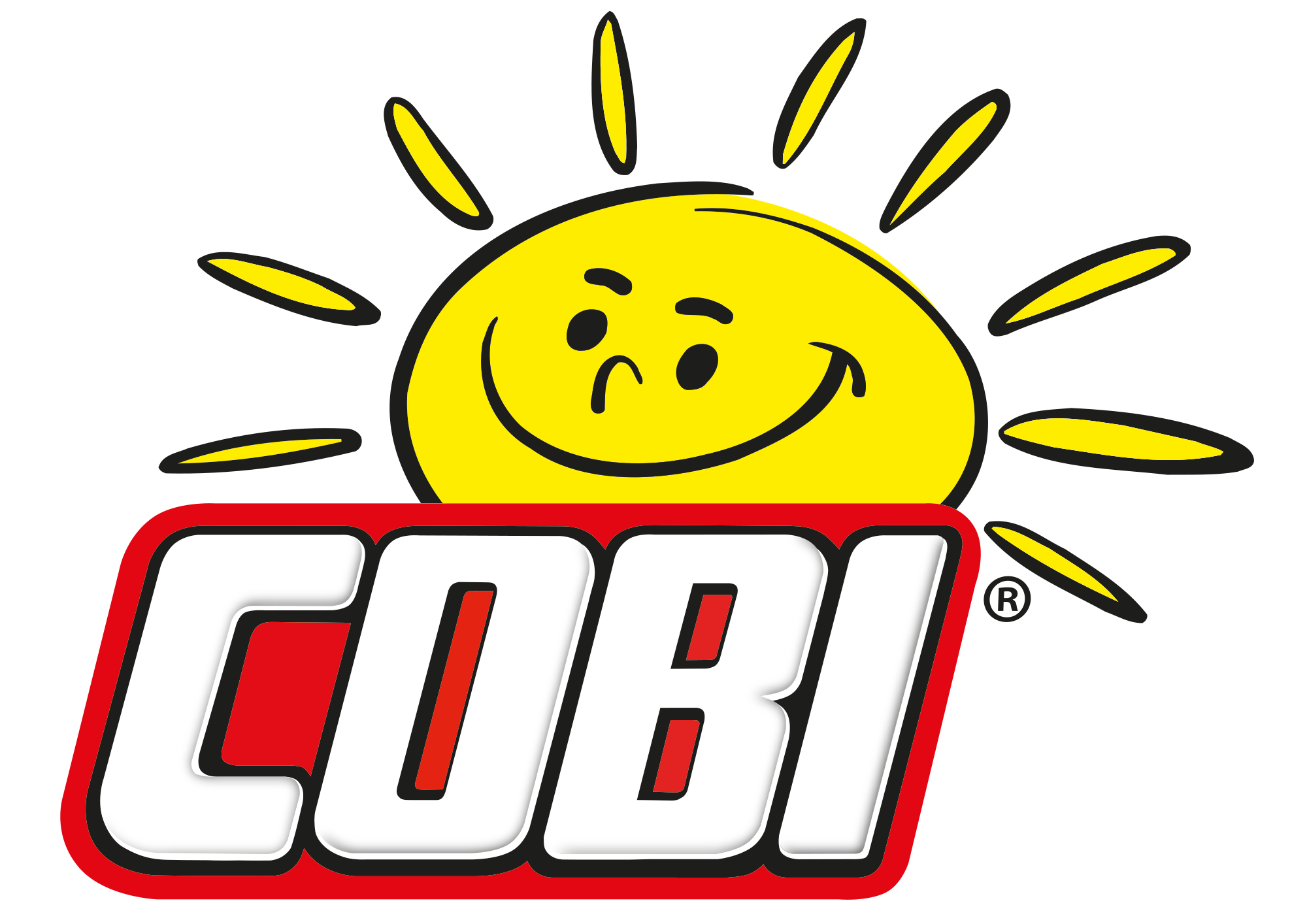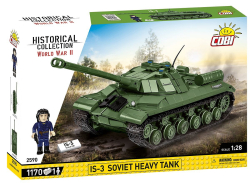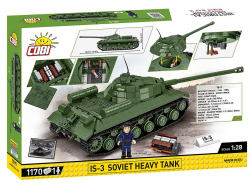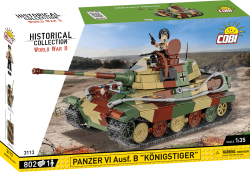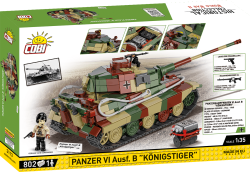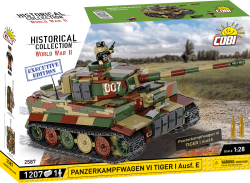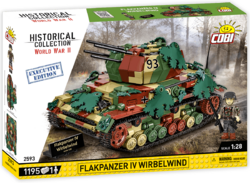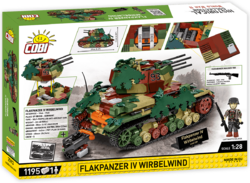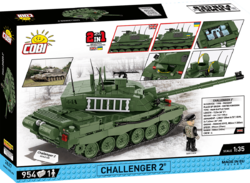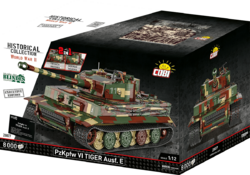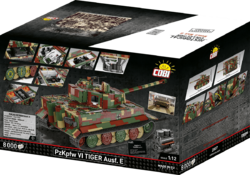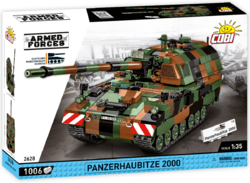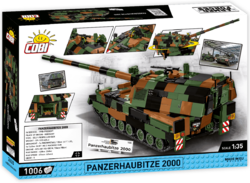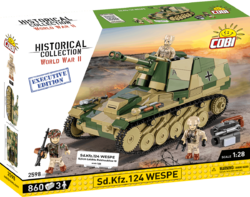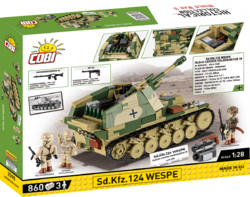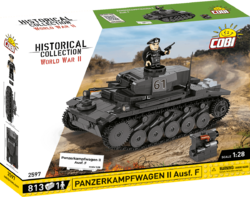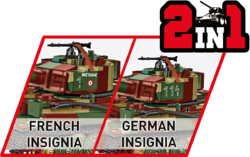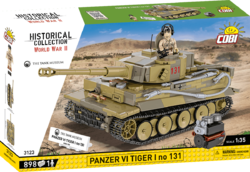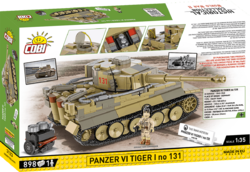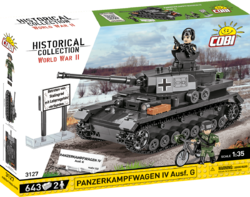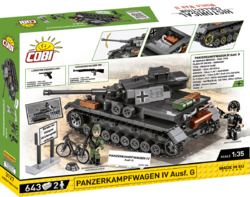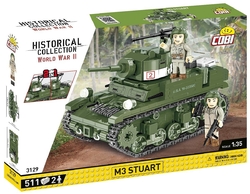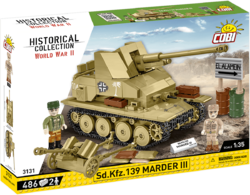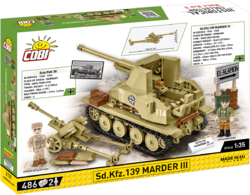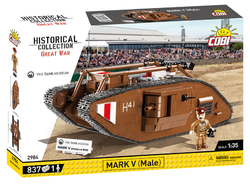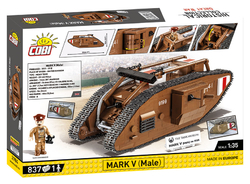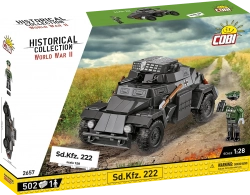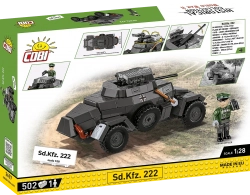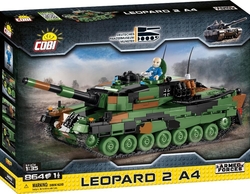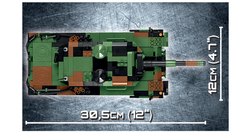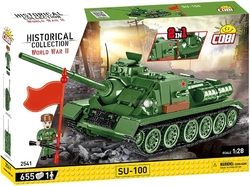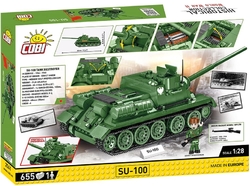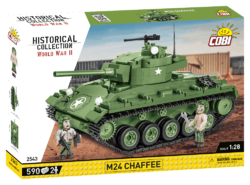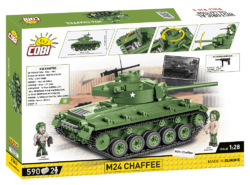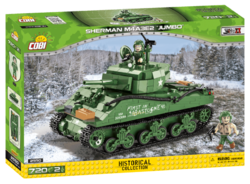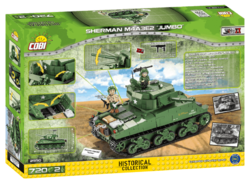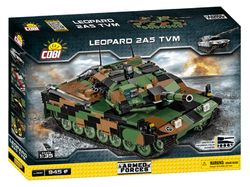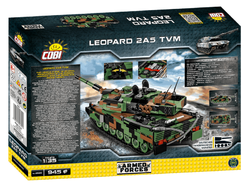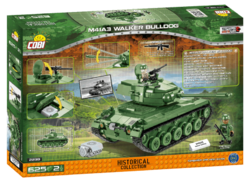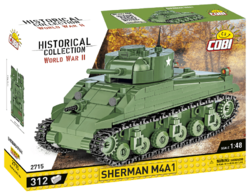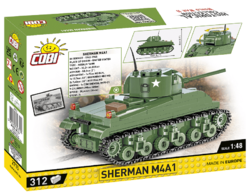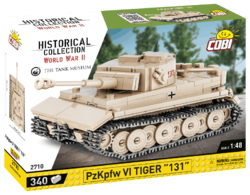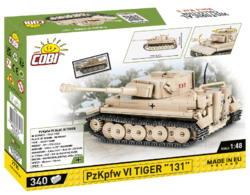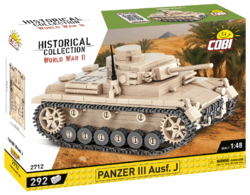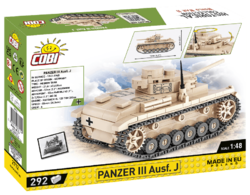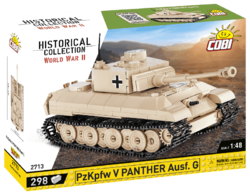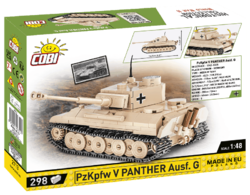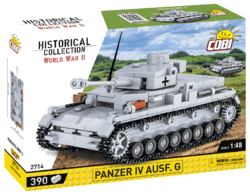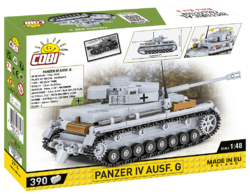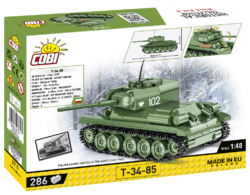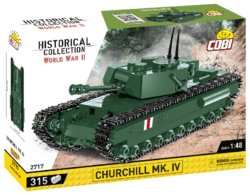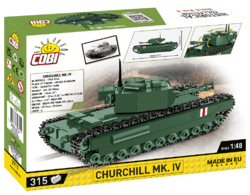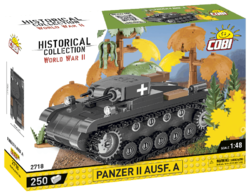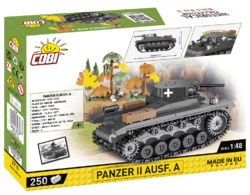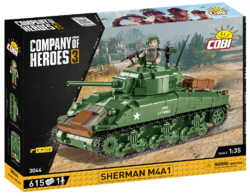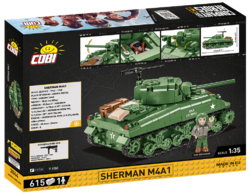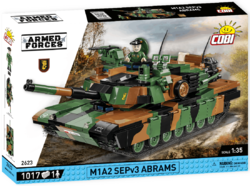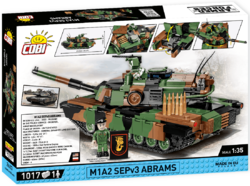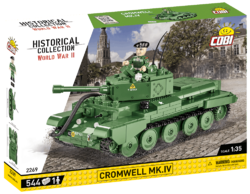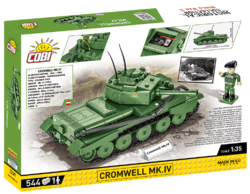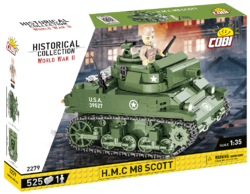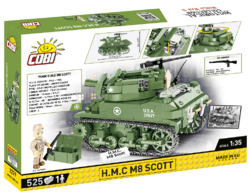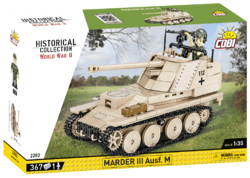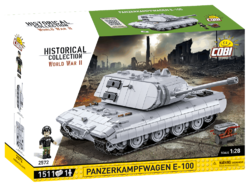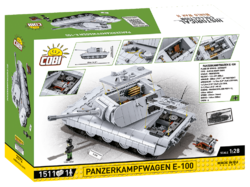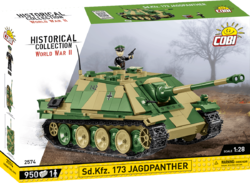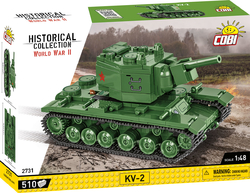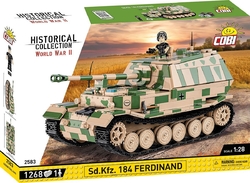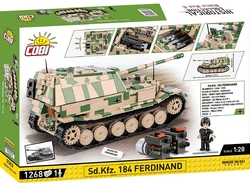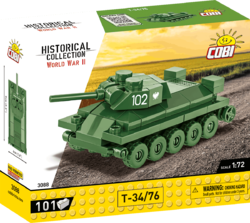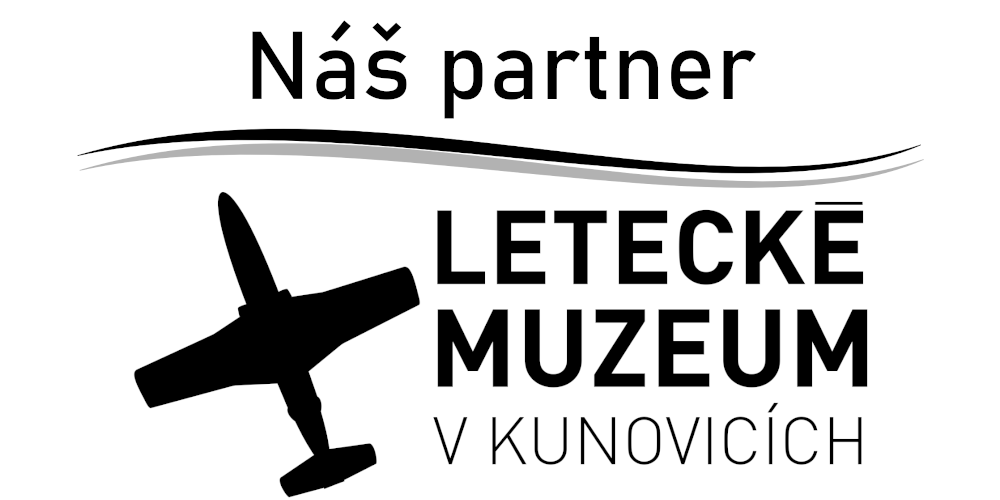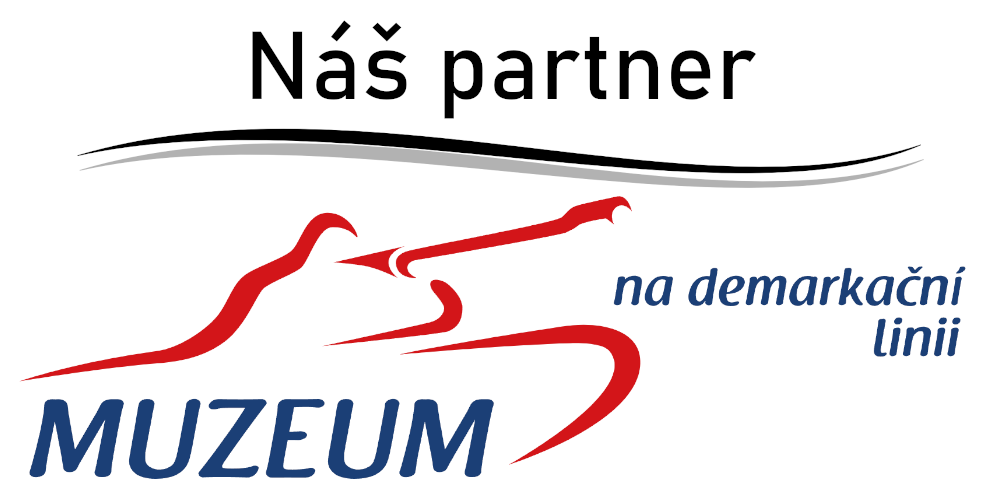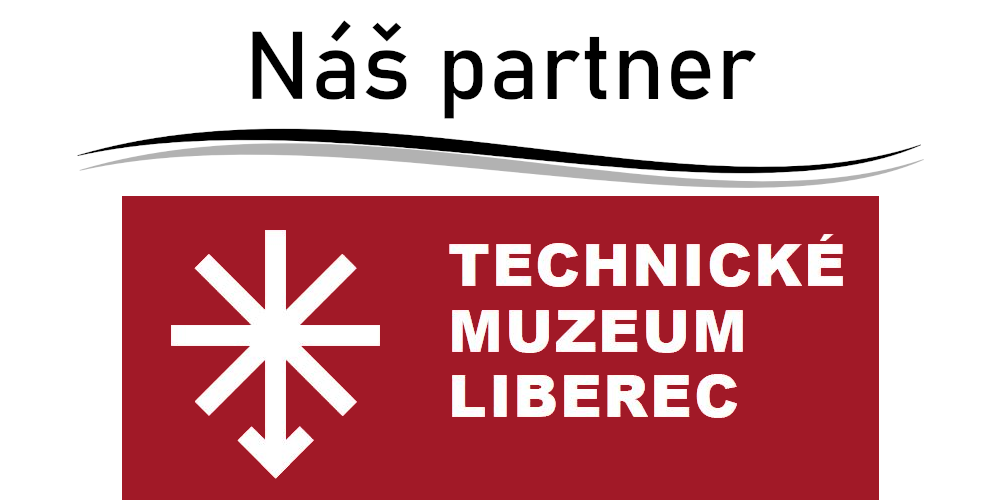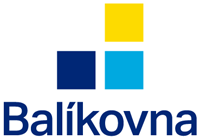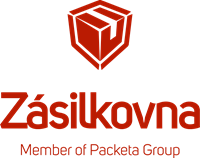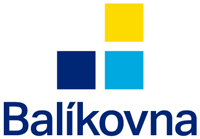Kit of the heavy Soviet tank Iosif Stalin IS-3 in traditional green army camouflage. The assembled tank has a rotating turret with an adjustable gun sight, opening manhole covers and an opening engine cover. The Kharkiv engine can be removed from the tank and displayed separately. A new feature is the floating storage of the tank tower, which can be lifted to view the detailed interior. The tracks are functional and the model can be easily driven on a non-slip surface. The limited edition model commemorates the victorious Allied parade in Berlin in 1945. The kit includes a parade stand with the flags of the participating countries, a figure of French General M. P. Koenig, American General G. Patton, Soviet Marshal Zhukov and British Major General B. Robertson. The package also includes a certificate with a unique serial number.
Show more
0 %
(0 Ranking)
441,88 zł
pcs
Add to Cart
In stock - ready to ship (1 pcs)
| List Number: | COBI-2589 |
| Warranty: | 24 months |
| Manufacturer: | COBI |
| Price excluding VAT: | 365,19 zł |
Description
Parametres
Files and Links
Discussion
Reviews

You know that: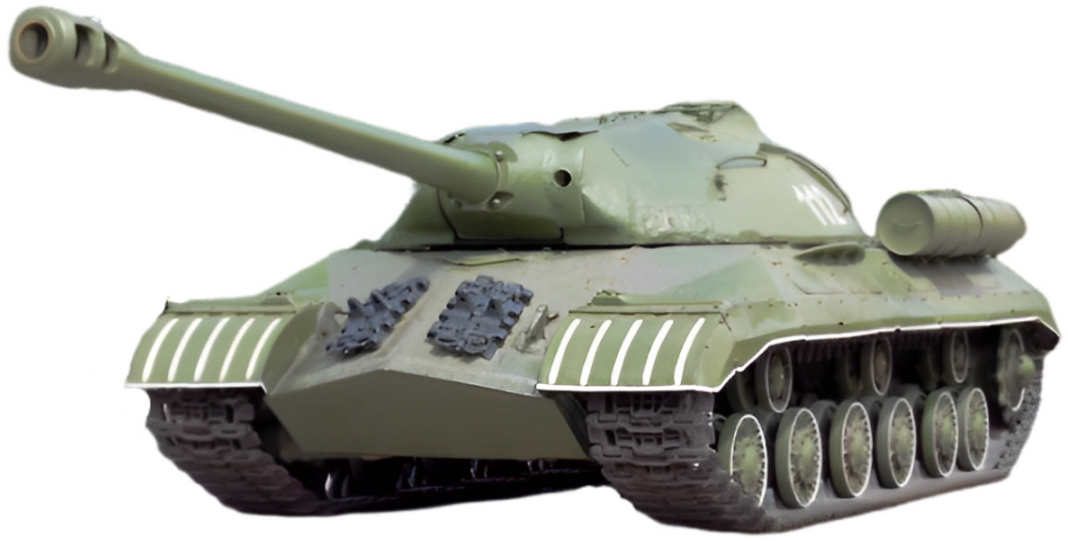
- Work on the new tank, codenamed Object 703, began in 1944.
- The Soviet Union was building two prototypes simultaneously. One of them had a hull with an arrow-shaped frontal armour and a turret reminiscent of the obsolete KV tank, and the other one was distinguished by the peculiar modern shape of the tank turret.
- Military Chief for Tank Industry V. A. Malyshev, after demonstrating both prototypes, decided to merge the projects. The tank was thus redesigned and presented to Marshal Zhukov in December.
- The production of the new tank was approved by J. Stalin himself, who also chose the designation bearing his name.
- Although some historical sources speak of the deployment of IS-3 tanks at the end of the war during the capture of Berlin, according to production records the new Soviet tanks did not intervene in any of the battles. This did not happen until much later.
- The world first learned of the IS-3 tank on September 7, 1945, when the Allied victory parade was held in Berlin. For the representatives of the victorious powers, General M. Koenig, Gen. Patton and Gen. B. Robertson, it was not a pleasant surprise. Marshal Zhukov duly enjoyed the parade of tanks in front of the ceremonial grandstand while constantly glancing at the surprised army commanders present. The most calm was shown by Gen. Georege Patton, to whom Zhukov said: 'I see that nothing will upset you Americans. You think you've seen it all."
- Egypt's first deployment of IS-3 tanks against Israel was a disaster. Extremely unreliable propulsion equipment and poorly trained Egyptian crews suffered devastating losses. Of the 100 tanks deployed, 73 were destroyed and the remainder remained unmounted on the battlefield.
- Engine cooling was also a major problem, as it easily overheated. Replenishing 170 litres of water to the cooling system in the desert was a big problem.
- Another infamous tank deployment was the Soviet occupation of Czechoslovakia in 1968.
- Despite all the mistakes, the IS-3 tank was a formidable weapon in the hands of an experienced crew. However, it was expensive to produce, and so production ceased in 1946.
- The last units were retired from the USSR's arsenal in 1985.
Technical parameters:
- dimensions: length 9.85 m (with gun), width 3.2 m, height 2.45 m
- weight 49 120 kg
- armour: 200mm front and turret
- power unit 12-cylinder Kharkiv V-2 engine with 388 kW
- maximum speed 37 km/h
- fuel tank capacity 550 litres
- range 150 km/h off-road
- main armament D-25T cannon 122 mm calibre
- secondary armament 1x 7.62 mm DT machine gun and 1x 12.7 mm DShK machine gun
- crew of 4
Military parade on 7 September 1945 - Berlin: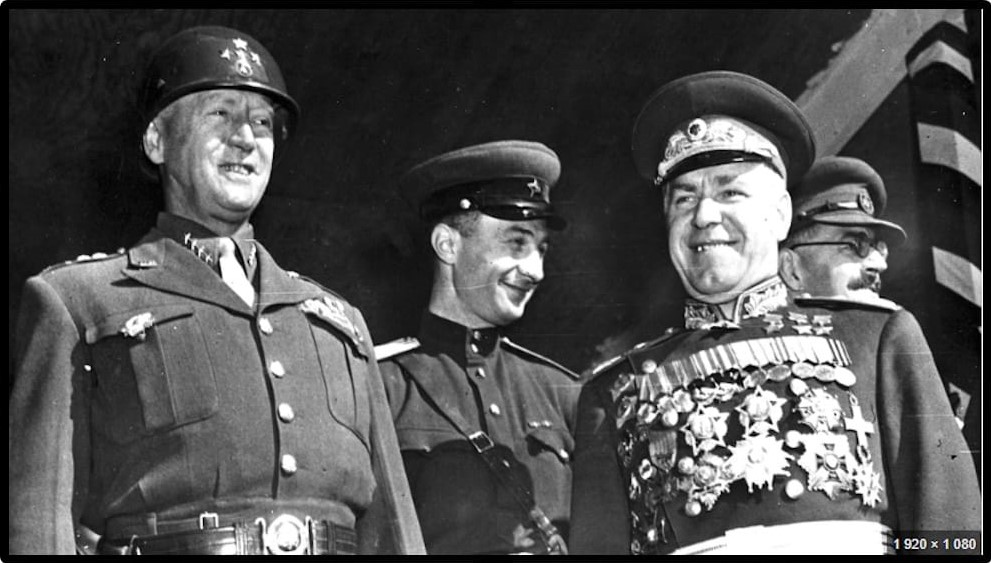
- The parade was organized at the request of the Soviet Union with the participation of representatives of the Soviet Union, the USA, Great Britain and France
- Units participating: the Soviet 248th Rifle Division, the 2nd French Infantry Division, the 131st British Brigade and the 82nd Infantry Division. U.S. Airborne Division.
- Soviet Union officials were not happy with the outcome of the parade, as the event was not as widely talked about in the world as J. Stalin had wanted.
General Nikolai Chernichov on the IS-3 tank:
"The IS-3 was a formidable machine with heavy armor and a powerful gun, but its unreliability and susceptibility to failure prevented it from reaching its full potential."
Assembly instructions
| Scale | 1 : 28 |
|---|---|
| Number of pieces | 1274 pcs |
| Dimensions after assembly | 35,5 x 11,5 x 13 cm |
| Number of figurines | 4 pcs |
| Material | Plastic |
| Collection | World War II Limited Edition |
| Compatible with other brand of kits | Yes |
Discussion is empty.
There is no review for product yet










